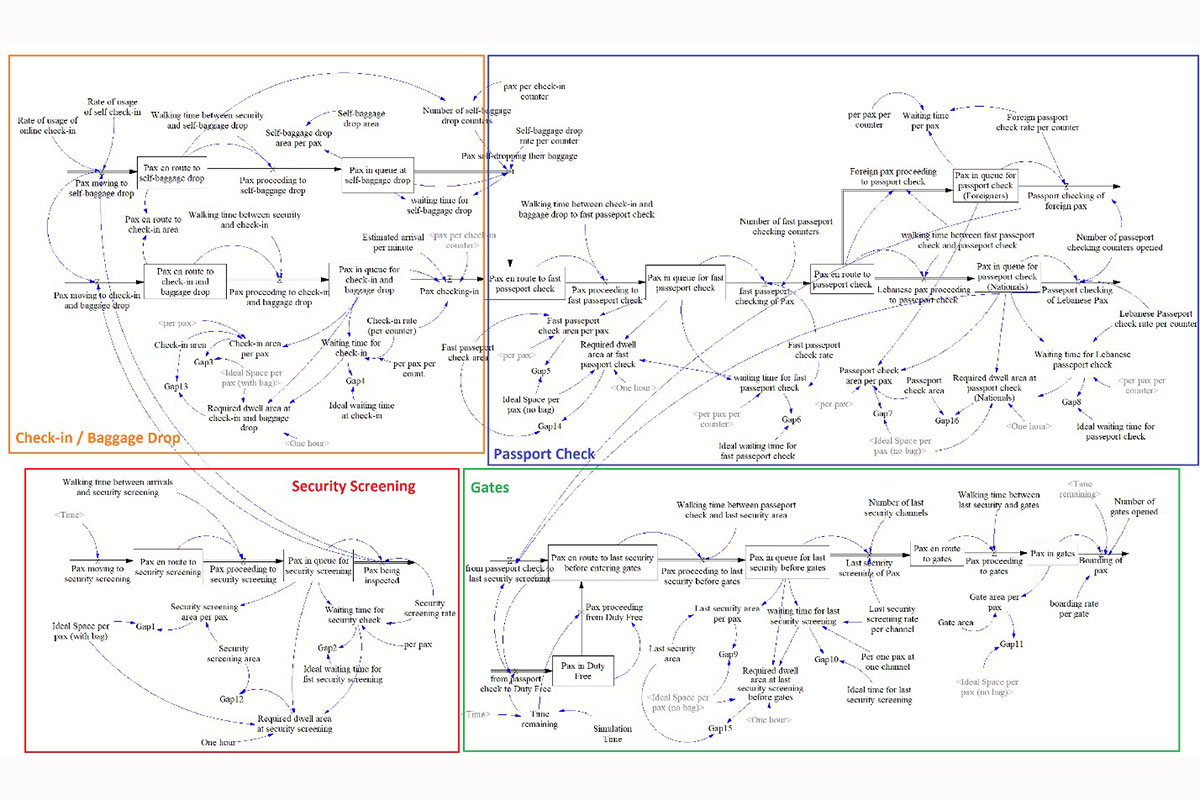Alleviating airport terminal congestion through dynamic space reallocation
Project Details
- Student(s): Pia El Hajj and Rouba Bettany
- Advisor(s): Dr. Pierrette Zouein and Dr. Marc Haddad
- Department: Industrial & Mechanical
- Academic Year(s): 2019-2020
Abstract
This project addresses the problem of congestion prevalent in most airports around the world, especially at security screening and check-in areas of departure terminals due to rapid growth in civil aviation demand. Addressing this problem is often limited by space and financial constraints, making layout optimization the most feasible option available. However, misestimating space needs due to a common misuse of international standards for space requirements at different levels of service (LOS) renders many re-layout projects ineffective. This factor coupled with an inefficient initial layout are found to be the main reasons behind the high congestion experienced at Beirut-Rafic Hariri International Airport (BEY) departure terminal during peak season demand, making it an ideal candidate for a case study on terminal layout optimization.
This paper presents a proof of concept emphasizing the importance of employing two strategic metrics, dwell area, and dwell time, along with system dynamics (SD) modeling to revamp airport passenger terminals’ layout. This approach aims to alleviate congestion resulting from the sharp rise in passenger demand compared to the slow expansion of airport capacity. The paper introduces a macroscopic system dynamics model depicting the overall flow of departing passengers at the BEY terminal, utilizing dwell time as a variable to assess and redistribute existing space within the departure terminal at minimal investment costs. The presented SD model offers a comprehensive and user-friendly decision support tool, aiding airport planners and operators in accurately evaluating dwell time and the necessary dwell area for existing terminals, thus facilitating improvements. The model highlights how misjudging space needs due to the misuse of IATA standards results in oversizing certain areas at the expense of others, contributing significantly to congestion at BEY airport. This research’s value lies in providing an effective decision support tool for airport operators to enhance passenger flow within existing space constraints and minimal investment, thus addressing congestion challenges and improving overall terminal efficiency.
Publication
- Zouein P., Haddad M., El Hajj P. and Bettany R. Alleviating airport terminal congestion through dynamic space reallocation, Proceedings of the 5th NA International Conference on Industrial Engineering and Operations Management, Detroit, Michigan, USA, August 10 - 14, 2020.
